Affiliate links on Android Authority may earn us a commission. Learn more.
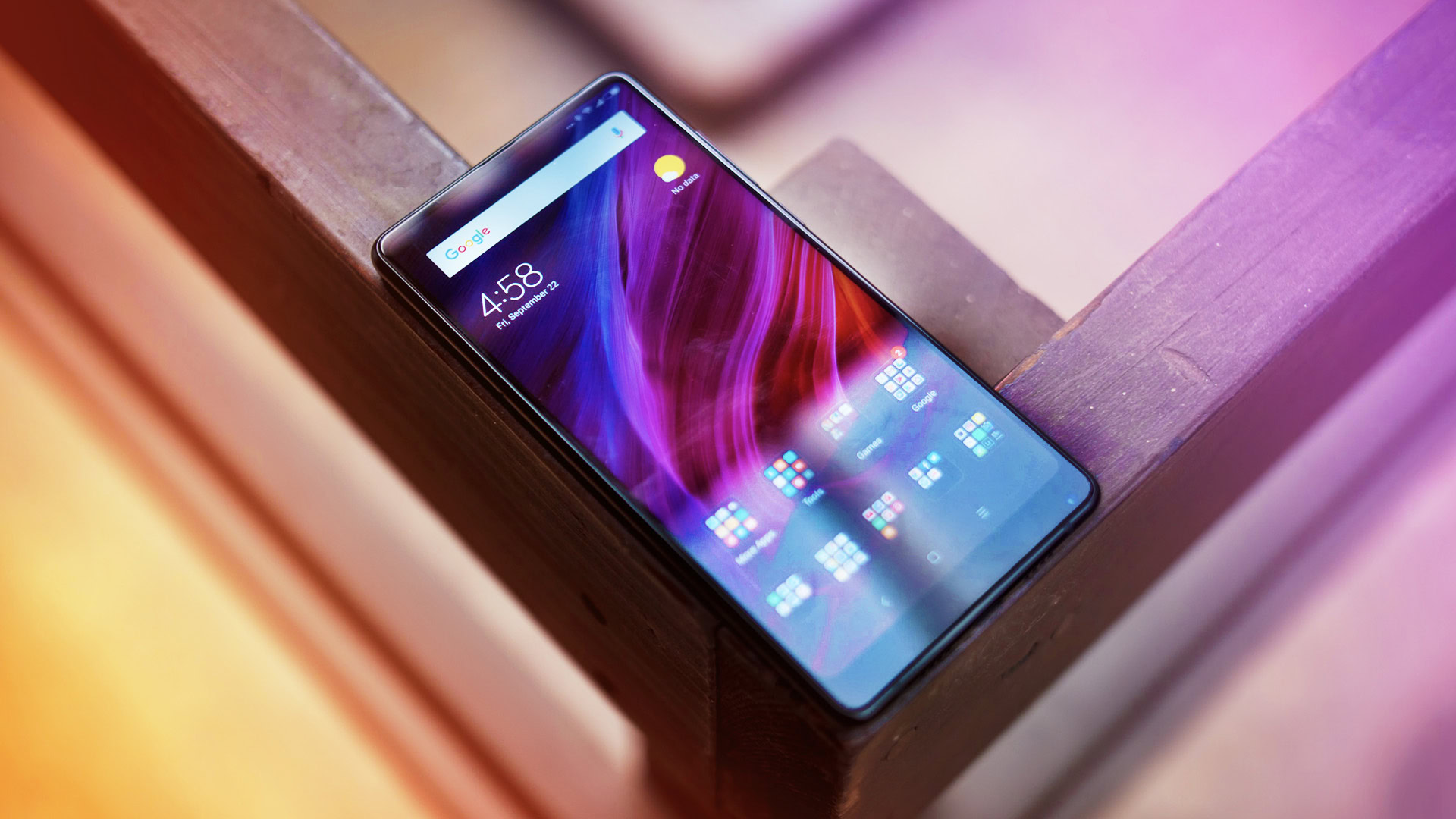
Xiaomi Mi Mix 2
What we like
What we don't like
Our scores
Xiaomi Mi Mix 2
All screen, all the time – that was the philosophy behind the Xiaomi Mi Mix, one of last year’s hottest smartphones. Coming before offerings from Samsung and LG, it was Xiaomi that made such a big deal about having a minimal bezel display that we all had to pay attention. Naturally, expectations are a little high for the followup to a phone that tried to put just a screen in your hands. This is our full review of the Xiaomi Mi Mix 2.
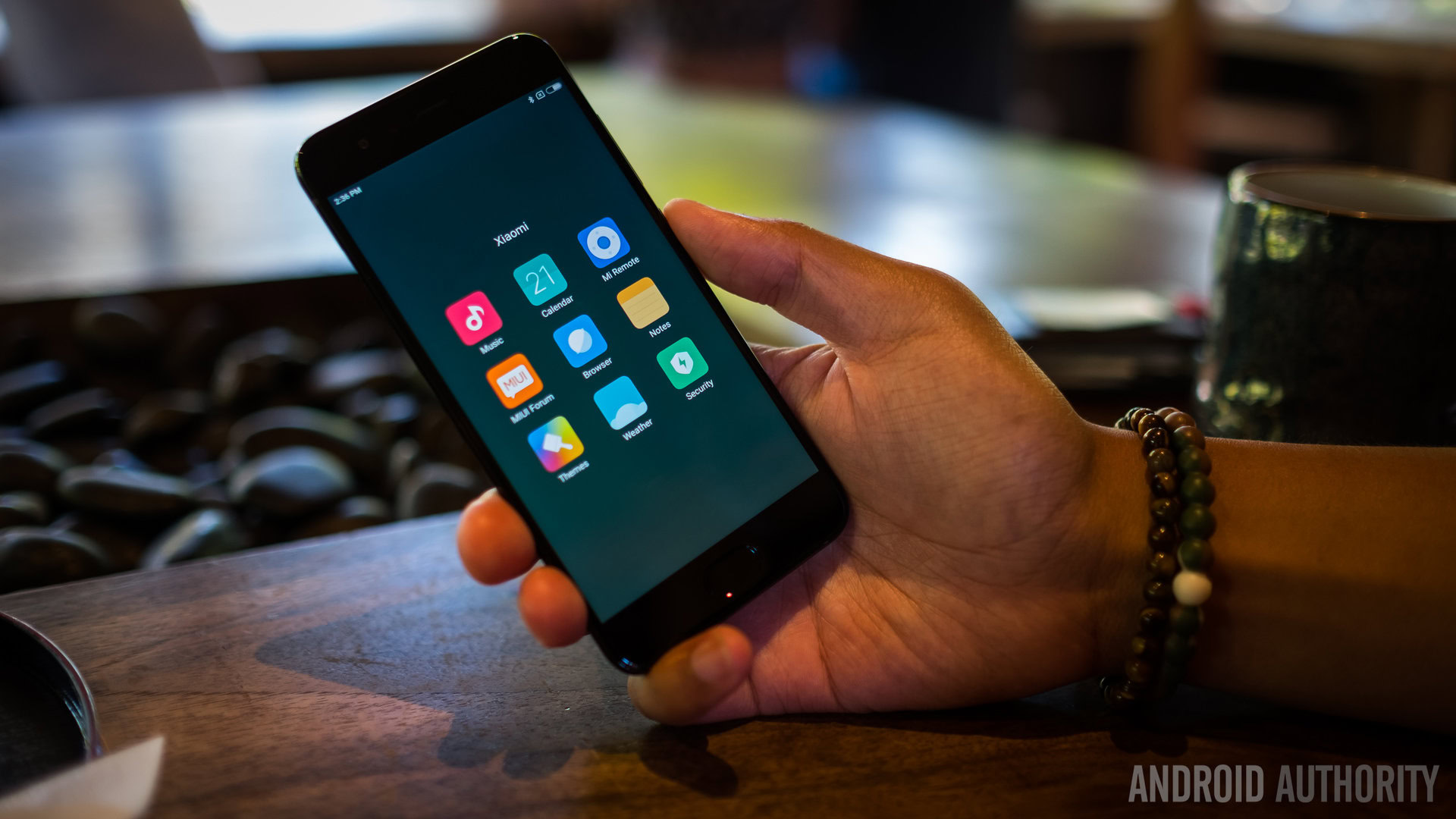
Design
The first thing that most people will notice is the different size. Minimal bezels are generally supposed to help with the handling of a larger screen, but the original Mi Mix opted for a super-sized screen that wasn’t very easy to handle with one hand. That changes this time with a 5.99-inch IPS LCD display that minimizes what already prioritizes minimalism. As a result, the phone is easier to grip and keep from slipping about despite the ceramic body.
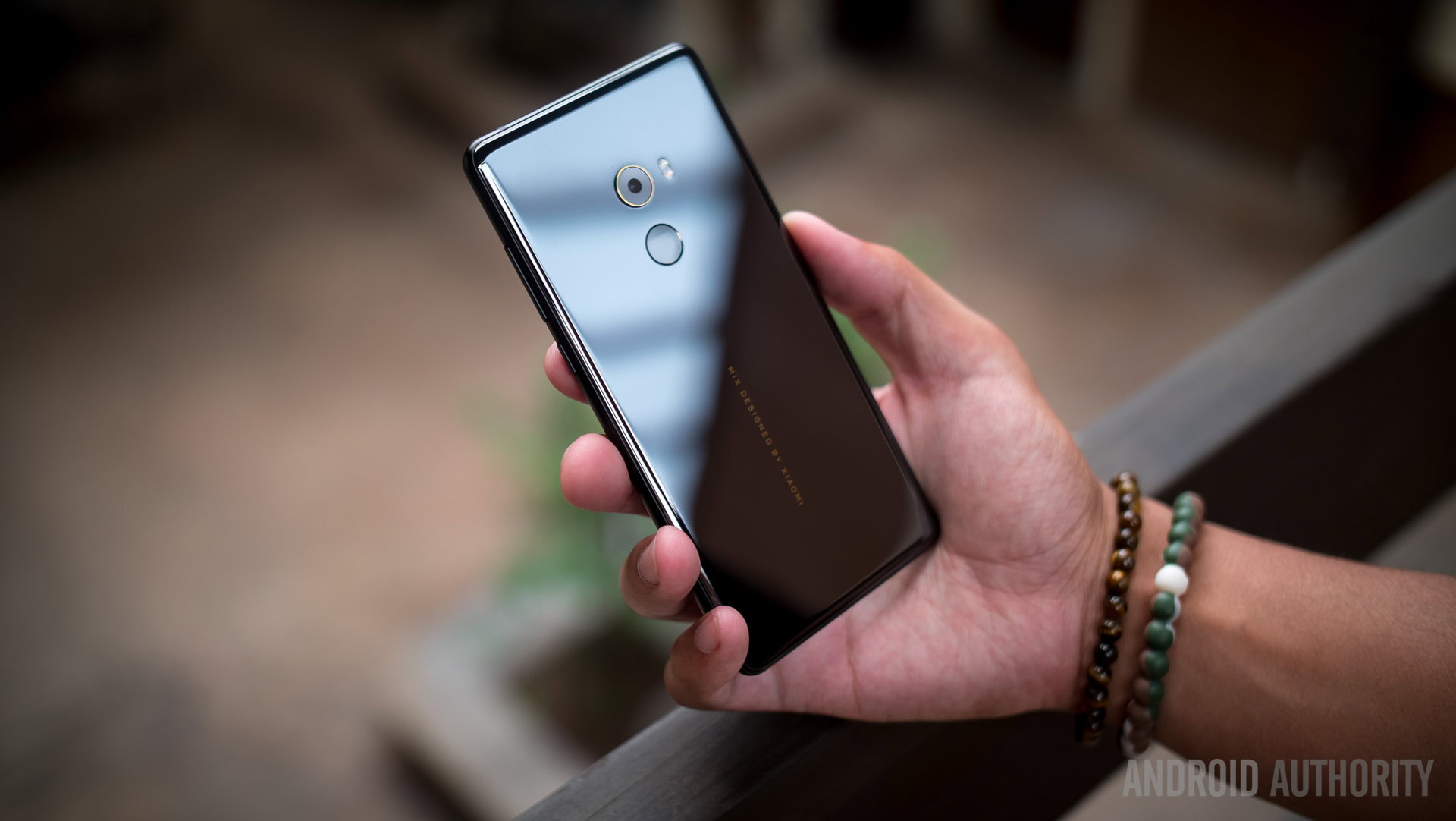
We love that Xiaomi is sticking to making ceramic phone bodies.
We love that Xiaomi is sticking to making ceramic phone bodies, and that the Mi Mix 2 continues this pleasing design trope. The back shines beautifully, with few elements breaking up the sheen. The fingerprint reader is found in an optimal place, just below the company’s simple but dramatic branding. The Mix 2 is easier to hold because of the smaller size, as we mentioned before, but also because of the rounded sides and edges that can actually be gripped this time around.
The curves make this phone look quite different from its predecessor, and not necessarily for the better. Xiaomi’s freshman attempt had a more square, angular look. It was an attractive take on the all-screen philosophy. Now, we have a phone that might seem pretty familiar to anyone that is used to current high screen-to-body ratio smartphones. It’s traded distinctness for familiarity.
Display
Over 80% of the front is taken up by that IPS display.
Over 80% of the front is taken up by that IPS display, and it stretches up to the very top of the phone. This is still a wonderful look that avoids the divots and notches that we see from the likes of Essential and the iPhone X.
However, the same compromise that helped make the front of the original Mi Mix a reality is back. The front facing camera is located in the bottom corner of the phone in one of the most awkward positions that we’ve ever seen. Not only is it incredibly easy to cover up the camera with one’s right hand, it makes for an odd angle that will annoy selfie experts. Sure, the camera app tells the user to turn the phone upside down for more conventional self-portraits, but that is not an option when using apps like Instagram and Snapchat.
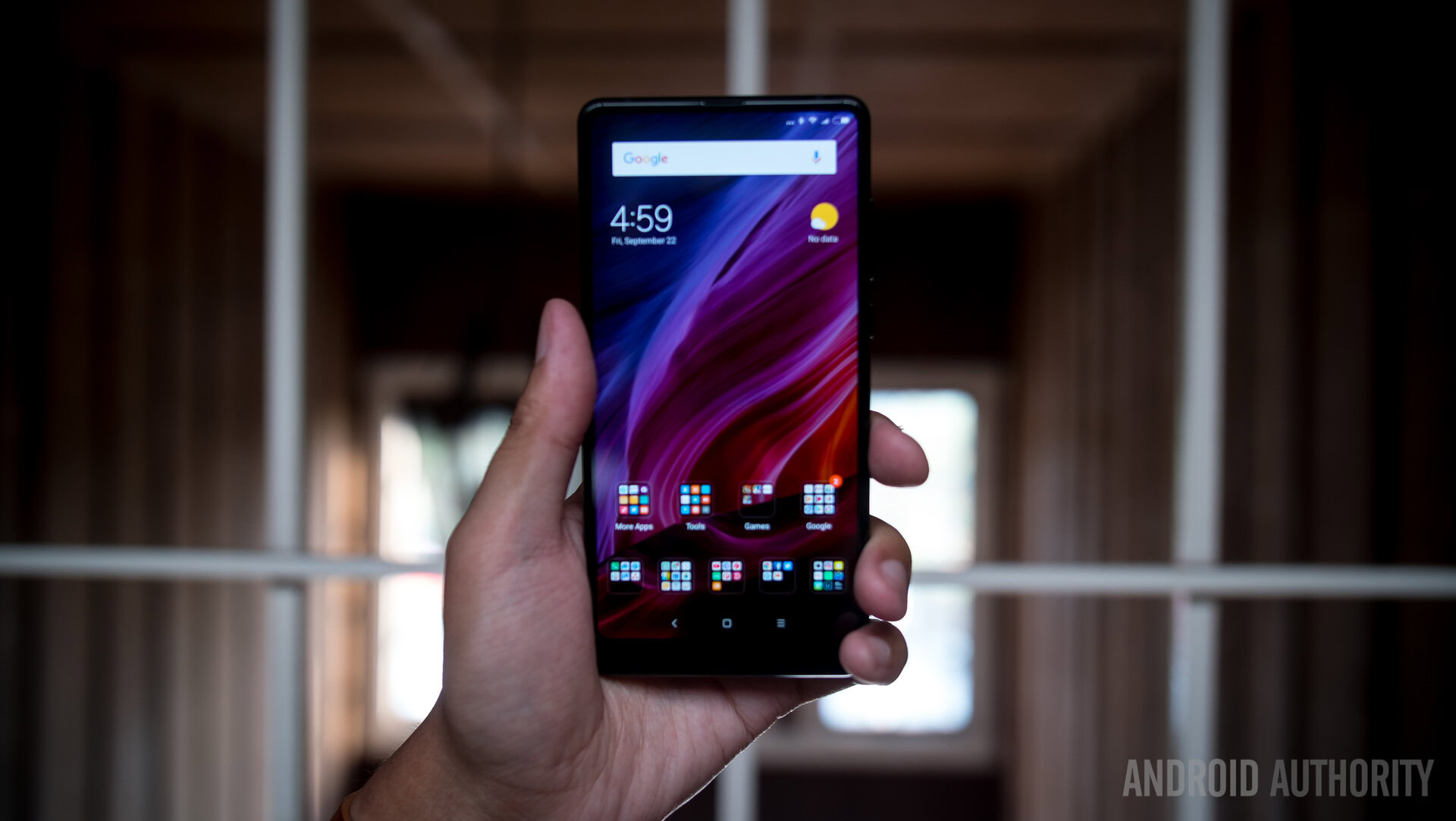
Other compromises were actually mitigated this time around. The ultrasonic proximity sensor returns but is no longer accompanied by a vibration speaker found underneath the surface for calls. Now, there is a very small slit at the very top of the device that houses an actual phone speaker. It is a small driver that points upward and it already sounds much better than last year’s alternative.
Unlike the original Mi Mix, the Mi Mix 2 has a very small slit at the very top of the screen that houses an actual phone speaker.
While we think that the Mi Mix original’s lack of curves made for a more enticing design, we can’t deny that the new edition still rocks the all-display really well. We still miss the headphone jack and still don’t like the front facing camera placement, though.
What I really wish is that I was able to review the unibody ceramic version of this phone, which comes in both black and this incredible white color. Xiaomi claims that the white version is a lot like a perfect piece of jade, and it is definitely the edition of the Mix 2 that I would rock because it looks crazy good.
That IPS display does soften the blow a little, because it remains a wonderful viewing experience. The Mi Mix from last year was bucking a lot of trends in the Android space, bringing completely different aspect ratios to the operating system that were, at first, rejected by Google. But now that 18:9 aspect ratios are all the rage, the Mix 2 is afforded a good position to insert itself into the greater Android game.
This display is quite good to handle, though getting up and down the phone will still require hand gymnastics. The screen’s brightness is about where it should be even in daylight situations, though colors are just a little less saturated than its LED counterparts. You can change the color profile in the settings, and there is a reading mode included for lowering the blue light during the twilight hours.
Xiaomi’s only misstep is going with Full HD+ rather than Quad HD resolution.
Xiaomi’s only misstep with the screen here is making it Full HD+ rather than springing for Quad HD resolution. While the experience has still been great for gaming, media consumption, and all textual elements, that extra bit of clarity just keeps this phone from being squarely in the flagship pack.
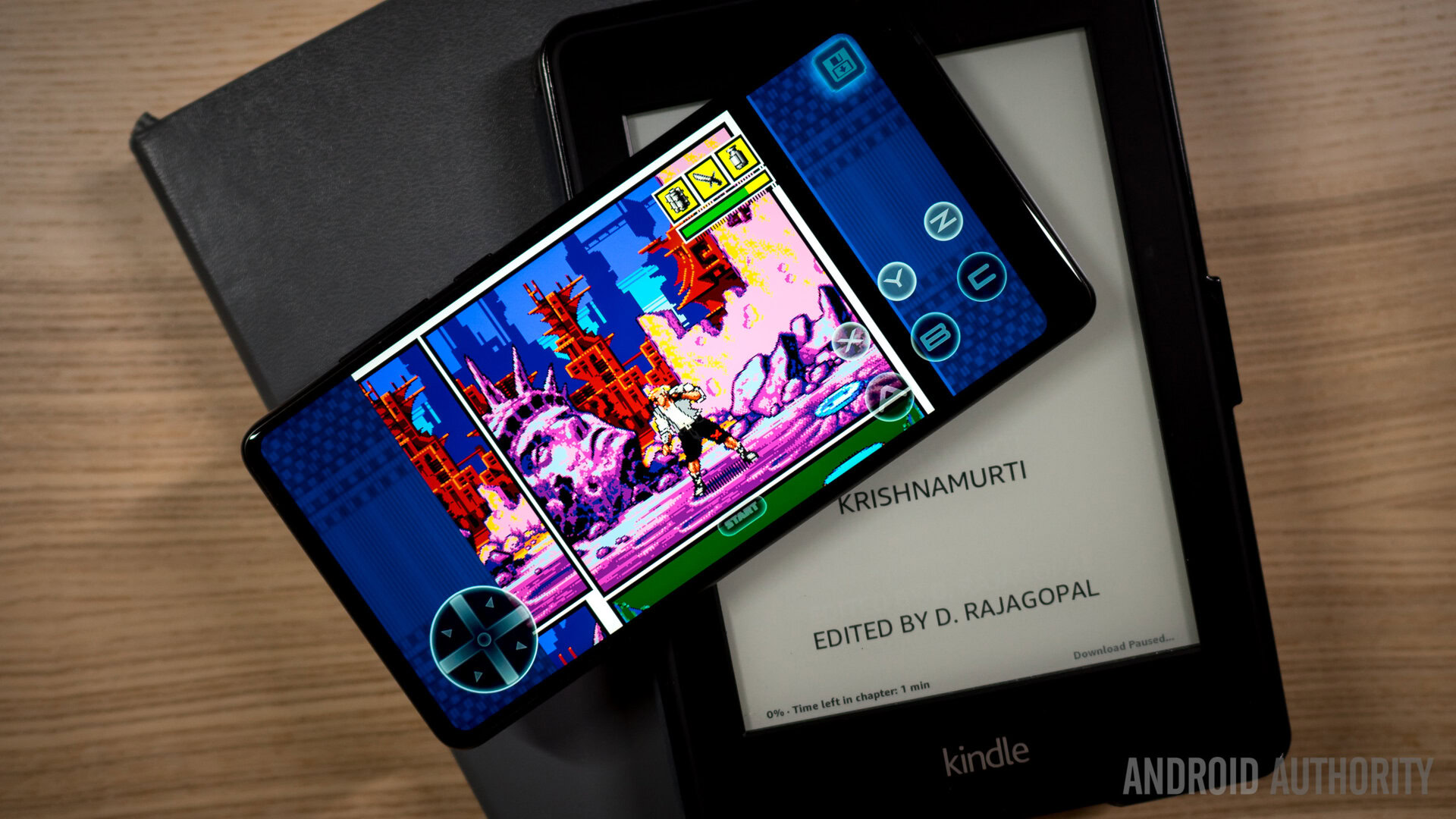
Performance
The internal specs really make this phone shine, even underneath its gorgeous ceramic body. The Snapdragon 835 is accompanied with either 6 or 8 GB of RAM that come at different price points. Storage isn’t a problem for this phone, despite the lack of a microSD card slot, either, as 64/128/256 GB storage options are available.
The internal specs really make this phone shine, and as this is a global-ready phone, Google Play Services are pre-installed.
I had no problem with the everyday performance with the Xiaomi Mi Mix 2, zipping between applications despite the actual software itself remaining a bit rough around the edges. As this is a global-ready phone, Google Play Services were pre-installed on this device and didn’t have to be injected after the fact like with the original Mi Mix.
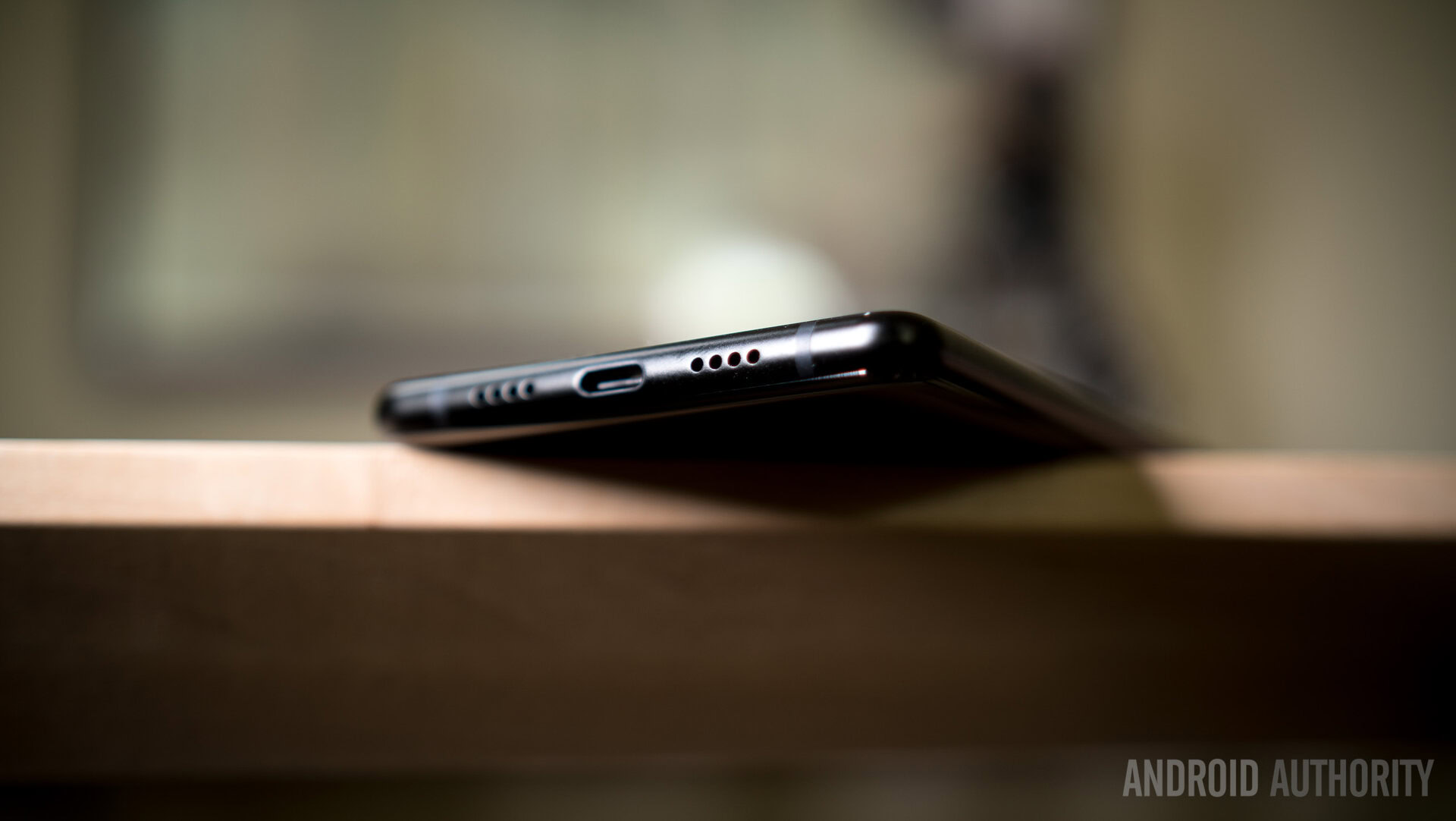
Hardware
The Mi Mix 2 has the most radios of any smartphone in the world.
Another factor that we were happy to see addressed this time around is the phone’s ability to work anywhere outside of China. The Mi Mix 2 has the most radios of any smartphone and is compatible with just about any band for voice and data throughout the world.
It was refreshing to use this phone with US LTE networks and not have to rely on slower HSPA+ speeds. When using the phone on my T-Mobile account, I also had no problems with calls and call quality on the GSM network, as sound came through nice and clear thanks to the new earpiece speaker.
Sound in other situations is a bit of a mixed bag, unfortunately – without a headphone jack, users are again forced to use a USB Type-C adapter to use wired headphones with the Mi Mix 2. While there are settings in the phone that help enhance the listening experience, it mostly requires use of Xiaomi’s own headphones to take advantage of it.
Sound in other situations is a bit of a mixed bag, unfortunately...
That was not as upsetting as the external speaker, however, which was an uneven experience. It seemed that, at volumes lower than 50%, the speaker was tuned to have a noise gate. Quieter sound seemed to drop off the spectrum so that there was a noticeable separation between it and louder parts of the audio. It was just noticeable enough to be annoying. The speakers will get the job done, but this phone feels like it’s begging you to use wireless headphone solutions at all times.
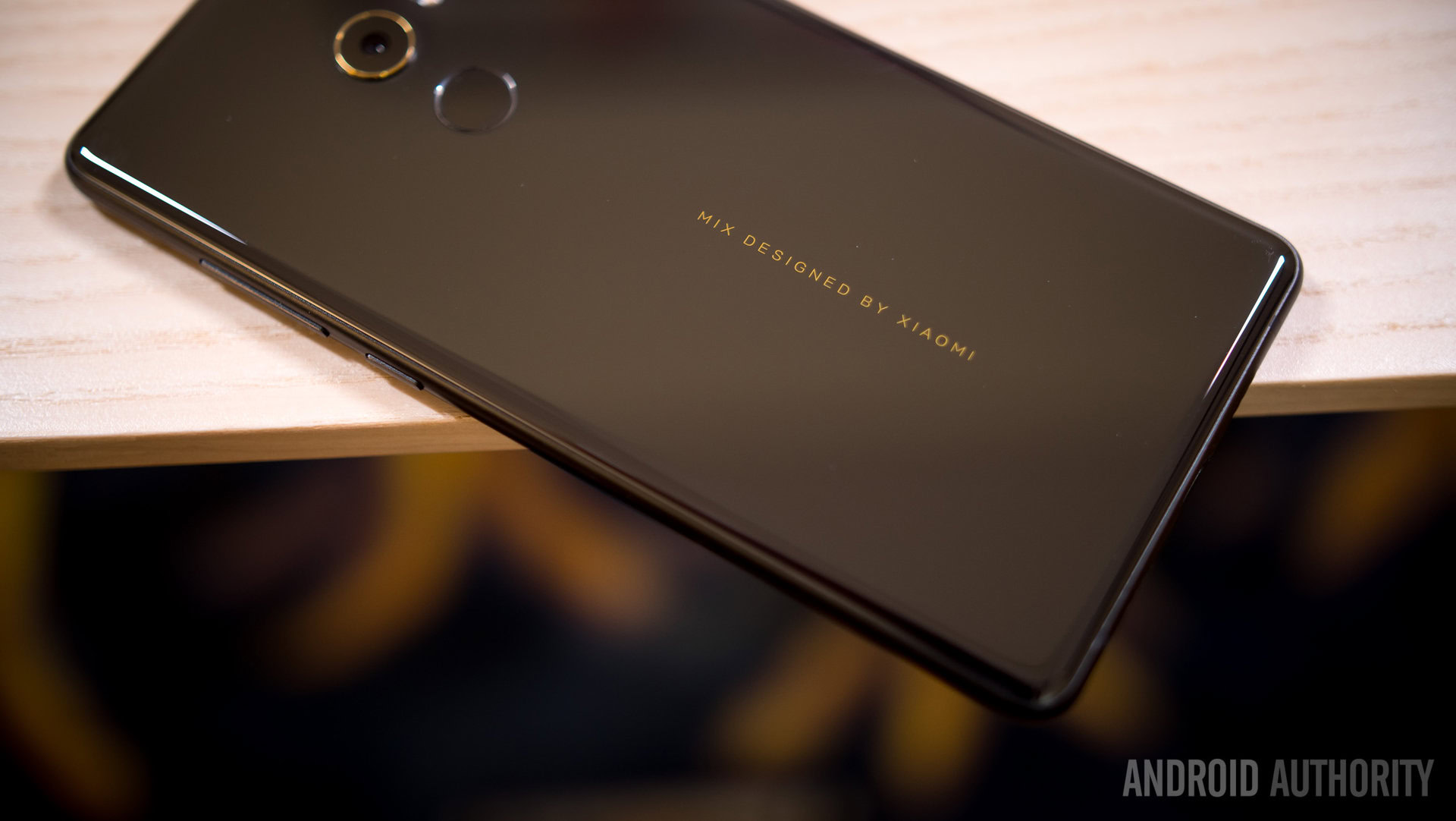
Battery life
Battery life was, like last year, a bright spot of the Mi Mix experience. While last year I could have attributed this to the lack of LTE connectivity, this year’s Mi Mix manages to last just as long. I got an average of 5 hours screen-on-time throughout 12+ hour workdays, some as long as 16 hours non-stop. Despite the large screen that takes up most of the body, the Full HD+ resolution helps a bit by being less power hungry. Nonetheless, getting power back isn’t a big deal with Quick Charge 3.0, which can top it up in no time.
Camera
Xiaomi decided to keep a surprisingly conventional camera experience compared to their competitors, at least on its back.
The rear camera is a 12 MP shooter that boasts 4-axis optical stabilization and not too much else. While the stabilization does help with some of the up-to-4K video capture modes and a bit better low light shooting, it is just about the only thing special about the camera. The app is still the same as before with no new modes. A manual mode does help with some deeper tweaking of the settings for specific results.
Pictures in general are pretty good, though it’s no surprise that it all kind of falls apart in low light. The HDR capture does help with exposure in lower light situations but it requires a longer shutter release and thus shutter to file speeds slow down pretty significantly. On that topic, the HDR setting is a toggle on the camera app rather than automatic like on plenty of other flagship devices. Hand-Held Twilight (HHT) mode produces decently crisp low light exposures although they do tend to be darker than HDR shots.
The front facing camera goes past unconventional and becomes downright odd.
The front facing camera goes past unconventional and becomes downright odd. I do a lot of video calls these days and this was where I found the camera positioning less than ideal.
When talking with someone and looking at their video feed, it makes you look like you are looking up and away from your subject, which is normally mitigated by more typical camera placements. Making the effort to look down at the corner usually meant that I also had to hold the phone in my left hand, because my palm would likely cover up and block the camera.
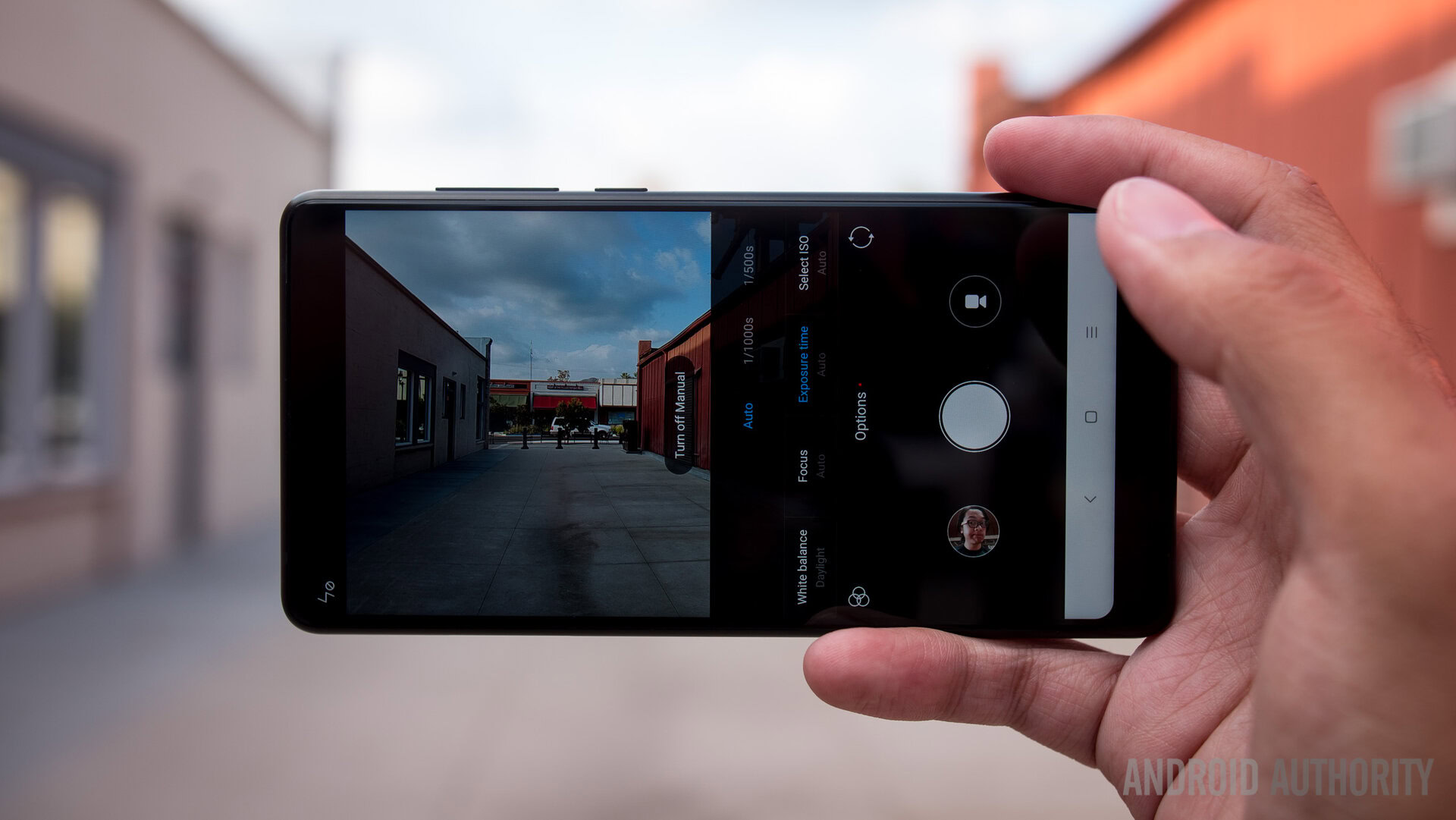
My other annoyance with the camera is that it is a bit too narrow – it just isn’t very wide at all, so it won’t capture much more than your head and very little of the background. The camera placement is uncomfortable as is, but adding the need to stretch one’s arm out in order to get more in the frame is even more awkward.
For those reasons, pictures coming out of the front facing camera, are rarely very good. Add to that the fact that you can’t use the camera upside down in apps like Instagram and Snapchat and you can see why the Mix 2 is definitely not my favorite selfie experience.
The camera did nothing to blow me away, even though I used it as a vlogging rig around Beijing. Some pictures came out really well, but plenty of others left quite a bit to be desired. I am inclined to say the camera is pretty average, especially since Xiaomi is trying much harder on their other phones with dual cameras.
Xiaomi is trying much harder on their other phones with dual cameras.
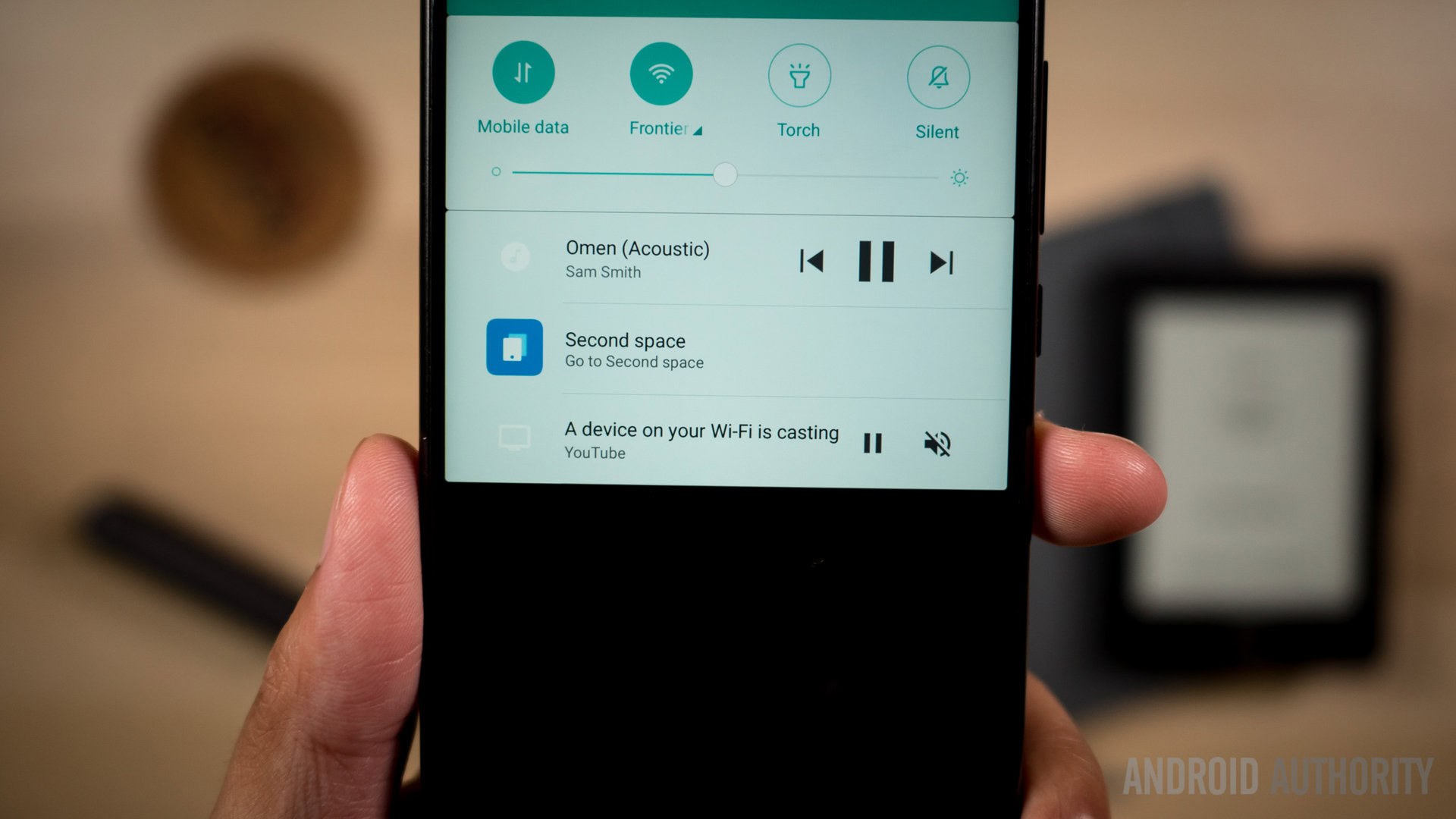
Software
Which brings us to the software and MIUI. MIUI is the backbone of Xiaomi and was the starting point of their success, so it’s not surprising that they continue to tweak and improve it as much as possible. Unfortunately, that doesn’t quite feel like the case here, as the software on the Mi Mix 2 feels really similar to previous versions of MIUI I experienced on the Mi 6 and the previous Mi Mix. That said, it is great that Xiaomi already included Google Play Services on my unit, which is important to have on a phone that is supposed to work outside of China.
MIUI still boasts quite a few features though. The Quick Ball is a small, convenient way of getting to core functions without relying on the soft keys. Dual App allows for multiple instances of the same application if you need to access two different accounts or experiences. Second Space can take that even further, by basically making a whole new second account that you can put together from scratch.
The main issues that I have with the software are ones I’ve had before, and they all have to do with polish.
Parts of the OS don’t seem to be completely finished or translated properly from Chinese and notifications in particular show up in odd ways – the heads up notifications don’t show any of the actual information and when looking at them in the notification menu, expanding puts much of the information too far down the screen.
The software on this phone is just short of ready for primetime outside China.
MIUI has come a long way and continues to be supported by the user forum community, meaning updates can come quickly. However, that doesn’t really excuse the bits of polish that are still missing even after a couple generations of Mi devices I’ve reviewed. That many of my critical apps, like Instagram, froze up and eventually crashed makes it clear that the software on this phone is just short of ready for primetime outside China.
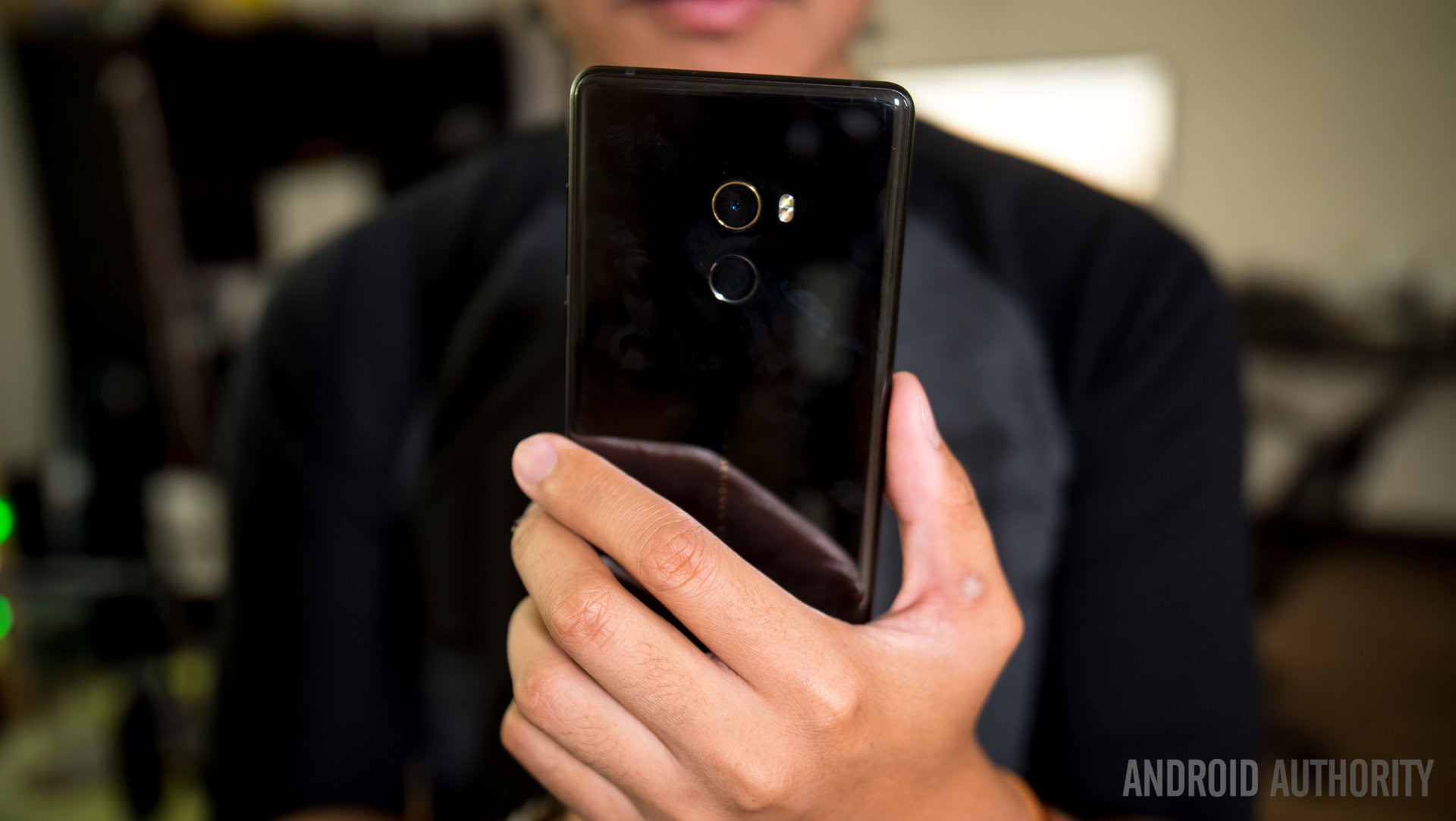
Specifications
| Xiaomi Mi Mix 2 | Xiaomi Mi Mix 2 Special Edition | |
|---|---|---|
Display | Xiaomi Mi Mix 2 5.99-inch FHD+ 2160 x 1080 resolution 570 ppi 18:9 aspect ratio DCI-P3 color gamut | Xiaomi Mi Mix 2 Special Edition 5.99-inch FHD+ 2160 x 1080 resolution 570 ppi 18:9 aspect ratio DCI-P3 color gamut |
Processor | Xiaomi Mi Mix 2 64-bit octa-core (max 2.45GHz) Qualcomm Snapdragon 835, 10 nm process | Xiaomi Mi Mix 2 Special Edition 64-bit octa-core (max 2.45GHz) Qualcomm Snapdragon 835, 10 nm process |
RAM | Xiaomi Mi Mix 2 6 GB LPDDR4X | Xiaomi Mi Mix 2 Special Edition 8 GB LPDDR4X |
Storage | Xiaomi Mi Mix 2 64 GB/128 GB/256 GB USF 2.1 | Xiaomi Mi Mix 2 Special Edition 128 GB USF 2.1 |
MicroSD | Xiaomi Mi Mix 2 No | Xiaomi Mi Mix 2 Special Edition No |
Cameras | Xiaomi Mi Mix 2 Rear: 12 MP sensor, f/2.0 aperture, 4-axis OIS, 1,25 μm, PDAF Front: 5 MP sensor, 1080p video, Beautify | Xiaomi Mi Mix 2 Special Edition Rear: 12 MP sensor, f/2.0 aperture, 4-axis OIS, 1,25 μm, PDAF Front: 5 MP sensor, 1080p video, Beautify |
Battery | Xiaomi Mi Mix 2 3,400 mAh (typical) 3,300 mAh (minimum) 2A QuickCharge 3.0 | Xiaomi Mi Mix 2 Special Edition 3,400 mAh (typical) 3,300 mAh (minimum) 2A QuickCharge 3.0 |
Wireless charging | Xiaomi Mi Mix 2 No | Xiaomi Mi Mix 2 Special Edition No |
Water resistance | Xiaomi Mi Mix 2 No | Xiaomi Mi Mix 2 Special Edition No |
Connectivity | Xiaomi Mi Mix 2 Wi-Fi 802.11 a/b/g/n/ac (2.4/5 GHz), 2X2 MIMO and MU-MIMO Bluetooth 5.0 NFC USB Type-C (no 3.5 mm jack) Location (GPS, AGPS, Glonass, BeiDou) Network bands § 2G • GSM 2/3/5/8 • CDMA BC0,BC1,BC6,BC10 § 3G • CDMA EVDO,BC0,BC1,BC6,BC10 • WCDMA 1/2/3 / 4 / 5 / 6 / 8 / 9 / 19 • TDS-CDMA 34/39 § 4G • TD-LTE 34/38/39/40/41 • FDD-LTE 1/2 / 3 / 4 / 5 / 7 / 8 / 12 / 13 / 17 / 18 / 19 / 20 / 25 / 26 / 27 / 28 / 29 / 30 • B41 supports 2496MHz-2690MHz full bandwidth • LTE B41 4 antenna technology, supports 4X4 MIMO | Xiaomi Mi Mix 2 Special Edition Wi-Fi 802.11 a/b/g/n/ac (2.4/5 GHz), 2X2 MIMO and MU-MIMO Bluetooth 5.0 NFC USB Type-C (no 3.5 mm jack) Location (GPS, AGPS, Glonass, BeiDou) Network bands § 2G • GSM 2/3/5/8 • CDMA BC0,BC1,BC6,BC10 § 3G • CDMA EVDO,BC0,BC1,BC6,BC10 • WCDMA 1/2/3 / 4 / 5 / 6 / 8 / 9 / 19 • TDS-CDMA 34/39 § 4G • TD-LTE 34/38/39/40/41 • FDD-LTE 1/2 / 3 / 4 / 5 / 7 / 8 / 12 / 13 / 17 / 18 / 19 / 20 / 25 / 26 / 27 / 28 / 29 / 30 • B41 supports 2496MHz-2690MHz full bandwidth • LTE B41 4 antenna technology, supports 4X4 MIMO |
SIM | Xiaomi Mi Mix 2 Dual nano SIM | Xiaomi Mi Mix 2 Special Edition Dual nano SIM |
Software | Xiaomi Mi Mix 2 MIUI 9 based on Android 7.0 Nougat | Xiaomi Mi Mix 2 Special Edition MIUI 9 based on Android 7.0 Nougat |
Dimensions and weight | Xiaomi Mi Mix 2 151.8 x 75.5 x 7.7 mm 185 g | Xiaomi Mi Mix 2 Special Edition 150.5 x 74.6 x 7.7 mm 187 g |
Design | Xiaomi Mi Mix 2 Aluminum alloy frame Four-sided curved ceramic body 18K PVD gold coating camera rim | Xiaomi Mi Mix 2 Special Edition Ceramic unibody design Black version: 18K PVD gold coating camera and fingerprint sensor rims White version: 18K PVD rose gold coating camera and fingerprint sensor rims |
Gallery
Final thoughts
All in all, the main problem the Mi Mix 2 is that the things its predecessor did differently are now standard in the smartphone world. The original Mi Mix was co-opted by the Essential Phone, among others, and we are seeing a move toward the phone’s 2:1 aspect ratio (well, 17:9 but close enough), along with minimal bezel displays, across the industry.
Xiaomi has done well to stick to its design guns in keeping the phone not only ceramic, but very similar to the minimalist and honestly beautiful original Mi Mix, albeit with more curves and a smaller overall body. If you want your Mi Mix 2 to be as unique as possible though, you might want to spring for the white unibody ceramic edition. Because the internals and the overall user experience of the Mi Mix 2 don’t set it apart from other high end Chinese devices and certainly other better known flagship smartphones. That special edition of the phone does come in at an equivalent of $720 US, making it the most expensive phone of the bunch.
However, the 6 GB RAM and 128 GB storage model is just over $600, making it at least a few hundred dollars lower in price compared to plenty of other recent flagship devices. Depending on your stance regarding the lower resolution display, the single camera, and the Chinese software experience, that might be one hell of a steal.
Read Next: Xiaomi Mi Mix 2S Review: The luster remains
It wouldn’t shock us if you wanted to go back to the phone that got us all really wanting all screen all the time – at least if you’re able to get your hands on it.